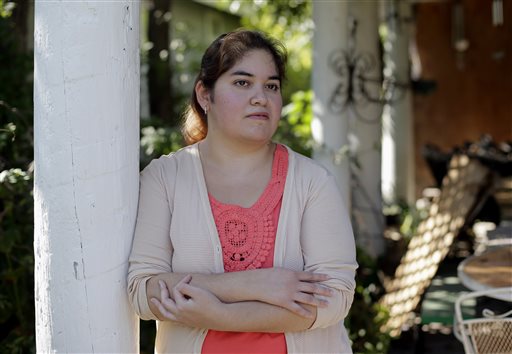By HOPE YEN
Associated Press
WASHINGTON
The gap in employment rates between America’s highest- and lowest-income families has stretched to its widest levels since officials began tracking the data a decade ago, according to an analysis of government data conducted for The Associated Press.
Rates of unemployment for the lowest-income families _ those earning less than $20,000 _ have topped 21 percent, nearly matching the rate for all workers during the 1930s Great Depression.
U.S. households with income of more than $150,000 a year have an unemployment rate of 3.2 percent, a level traditionally defined as full employment. At the same time, middle-income workers are increasingly pushed into lower-wage jobs. Many of them in turn are displacing lower-skilled, low-income workers, who become unemployed or are forced to work fewer hours, the analysis shows.
The findings follow the government’s tepid jobs report this month that showed a steep decline in the share of Americans working or looking for work. On Sunday, President Barack Obama stressed the need to address widening inequality, warning that proposed budget cuts will worsen the gap.
While the link between income and joblessness may seem apparent, the data are the first to establish how this factor has contributed to the erosion of the middle class, a traditional strength of the U.S. economy.
Based on employment-to-population ratios, which are seen as a reliable gauge of the labor market, the employment disparity between rich and poor households remains at the highest levels in more than a decade, the period for which comparable data are available.
Guerra says she now gets by doing “odds and ends” jobs such as a pastry chef, bringing in $500 to $1,000 a month, but she says daily living can be challenging as she cares for her mother, who has end-stage kidney disease.
Last year the average length of unemployment for U.S. workers reached 39.5 weeks, the highest level since World War II. The duration of unemployment has since edged lower to 36.5 weeks based on data from January to July, still relatively high historically.
Economists call this a “bumping down” or “crowding out” in the labor market, a domino effect that pushes out lower-income workers, pushes median income downward and contributes to income inequality. Because many mid-skill jobs are being lost to globalization and automation, recent U.S. growth in low-wage jobs has not come fast enough to absorb displaced workers at the bottom.
Low-wage workers are now older and better educated than ever, with especially large jumps in those with at least some college-level training.
The figures are based on an analysis of the Census Bureau’s Current Population Survey by Sum and Northeastern University economist Ishwar Khatiwada. They are supplemented with material from the Massachusetts Institute of Technology’s David Autor, an economics professor known for his research on the disappearance of mid-skill positions, as well as John Schmitt, a senior economist at the Center for Economic and Policy Research, a Washington think tank. Mark Rank, a professor at Washington University in St. Louis, analyzed data on poverty.
The overall rise in both the unemployment rate and low-wage jobs due to the recent recession accounts for the record number of people who were stuck in poverty in 2011: 46.2 million, or 15 percent of the population. When the Census Bureau releases new 2012 poverty figures on Tuesday, most experts believe the numbers will show only slight improvement, if any, due to the slow pace of the recovery.
Overall, more than 16 percent of adults ages 16 and older are now “underutilized” in the labor market _ that is, they are unemployed, “underemployed” in part-time jobs when full-time work is desired or among the “hidden unemployed” who are not actively job hunting but express a desire for immediate work.
Among households making less than $20,000 a year, the share of underutilized workers jumps to about 40 percent. For those in the $20,000-to-$39,999 category, it’s just over 21 percent and about 15 percent for those earning $40,000 to $59,999. At the top of the scale, underutilization affects just 7.2 percent of those in households earning more than $150,000.
By race and ethnicity, black workers in households earning less than $20,000 were the most likely to be underutilized, at 48.4 percent. Low-income Hispanics and whites were almost equally as likely to be underutilized, at 38 percent and 36.8 percent, respectively, compared to 31.8 percent for low-income Asian-Americans.
Loss of jobs in the recent recession has hit younger, less-educated workers especially hard. Fewer teenagers are taking on low-wage jobs as older adults pushed out of disappearing mid-skill jobs, such as bank teller or administrative assistant, move down the ladder.
Eric Reichert, 45, of West Milford, N.J. Reichert, who holds a master’s degree in library science, is among the longer-term job seekers. He had hoped to find work as a legal librarian or in a similar research position after he was laid off from a title insurance company in 2008. Reichert now works in a lower-wage administrative records position, also helping to care for his 8-year-old son while his wife works full-time at a pharmaceutical company.
___
Associated Press writer Tom Raum, Director of Polling Jennifer Agiesta and News Survey Specialist Dennis Junius contributed to this report.

COMMENTS
Please let us know if you're having issues with commenting.